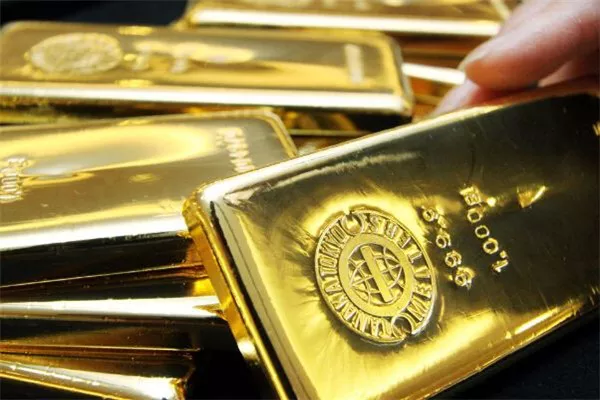Gold, palladium, and platinum are among the most coveted precious metals, each with unique properties and applications across various industries. Understanding the differences in their prices, market dynamics, and factors influencing their value is crucial for investors, traders, and industry stakeholders seeking to navigate the complexities of the global precious metals market. By examining the distinct characteristics and market trends of gold, palladium, and platinum, market participants can make informed decisions and leverage opportunities within the precious metals sector.
I. Gold: The Timeless Store of Value
Gold, often regarded as a symbol of wealth and a safe-haven asset, has maintained its intrinsic value and appeal across civilizations for centuries. Known for its lustrous appearance and resistance to corrosion, gold is widely used in jewelry, investment products, and industrial applications, including electronics and medical devices. The price of gold is influenced by various factors, including market sentiment, inflationary pressures, and geopolitical uncertainties, making it a popular choice for investors seeking to diversify their portfolios and protect their wealth during economic downturns and market fluctuations.
II. Palladium: The Versatile Industrial Metal
Palladium, a silvery-white metal with remarkable catalytic properties, is primarily used in the automotive industry for catalytic converters, which reduce harmful emissions from combustion engines. The increasing focus on environmental regulations and the growing demand for cleaner emission technologies have propelled the price of palladium in recent years. As a result, palladium has gained prominence as a valuable industrial metal, with its price dynamics closely tied to global automotive production, supply-demand imbalances, and geopolitical factors affecting mining operations in key producing regions.
III. Platinum: The Essential Industrial and Jewelry Metal
Platinum, recognized for its durability and resistance to corrosion, serves multiple industrial and jewelry-related purposes. Its exceptional properties make it a critical component in the manufacturing of catalytic converters, electrical components, and various medical devices. Additionally, platinum’s elegant appearance and prestige contribute to its widespread use in luxury jewelry and high-end accessories. The price of platinum is influenced by supply-demand dynamics, industrial production trends, and global economic conditions, with fluctuations often reflecting changes in market sentiment and the overall performance of the global manufacturing sector.
IV. Comparative Price Analysis
While all three metals are considered valuable and play vital roles in various industries, their prices can fluctuate significantly based on market demand, supply constraints, and industrial applications. Some key factors to consider when comparing gold, palladium, and platinum prices include:
1. Industrial Demand and Applications:
The price of palladium and platinum is heavily influenced by industrial demand, particularly in the automotive and manufacturing sectors, whereas gold is primarily influenced by investment demand and market sentiment.
2. Supply Constraints and Mining Operations:
Supply disruptions in major mining regions can impact the price of palladium and platinum, as these metals are often produced as byproducts of other mining activities. In contrast, gold mining operations are more diversified and spread across various regions worldwide.
3. Market Sentiment and Economic Trends:
Changes in global economic conditions, investor confidence, and geopolitical events can affect the prices of all three metals, although their sensitivity to these factors may vary based on their respective demand drivers and market applications.
4. Investor Behavior and Portfolio Diversification:
Investors often diversify their portfolios by including gold, palladium, or platinum based on their individual risk tolerance and investment objectives. Each metal offers unique characteristics that cater to different investor preferences and financial goals.
Understanding the complex interplay between industrial demand, market sentiment, and global economic trends is essential for investors and industry stakeholders looking to assess the comparative price dynamics of gold, palladium, and platinum and make informed decisions regarding their investment and trading strategies within the precious metals market.
V. FAQs: Gold, Palladium, and Platinum Price Comparisons
Q1: How do changes in industrial production impact the prices of gold, palladium, and platinum?
A: Changes in industrial production can affect the prices of palladium and platinum, as both metals are extensively used in manufacturing processes, particularly in the automotive and electronics industries. Gold prices are less directly influenced by industrial production and are often driven by investment demand and market sentiment.
Q2: What factors contribute to the demand for gold, palladium, and platinum in the jewelry market?
A: The demand for gold in the jewelry market is driven by its aesthetic appeal, durability, and cultural significance, while the demand for palladium and platinum is influenced by their unique properties and increasing popularity in contemporary jewelry designs. Changing consumer preferences, fashion trends, and income levels can impact the demand for all three metals in the jewelry market.
Q3: How do geopolitical events and trade tensions impact the prices of gold, palladium, and platinum?
A: Geopolitical events and trade tensions can affect the prices of all three metals by influencing market sentiment, investor confidence, and global economic stability. While gold is often perceived as a safe-haven asset during times of geopolitical uncertainty, palladium and platinum prices may fluctuate based on changes in global supply chains and trade policies affecting the automotive and manufacturing sectors.
Q4: How do investment trends in the commodities market influence the prices of gold, palladium, and platinum?
A: Investment trends in the commodities market can impact the prices of gold, palladium, and platinum, as investor behavior and market sentiment play a significant role in determining the demand for these metals. Changes in macroeconomic indicators, interest rates, and inflation expectations can influence investors’ decisions to allocate funds to different precious metals based on their perceived risk and return profiles.

